June 1, 2021
Japan's perch atop the volatile Pacific Ring of Fire means resilience is required — and the country has long invested in it. Despite a geographic footprint the size of California, Japan has poured more concrete than the entirety of the U.S. in its bid to stabilize landslides, marshal recalcitrant river systems, and confront an oft-errant sea.
But even with these precautions, disaster struck in 2011: An earthquake triggered a tsunami, which in turn triggered the worst nuclear disaster since Chernobyl when a seawall protecting the Fukushima Daiichi Nuclear Power Plant in Ōkuma failed. The triple catastrophes converged along Japan's northeastern coast in the Tōhoku region, with a nearly 280-mile stretch of peri-urban habitation hit hardest.
Overall, the domino effect left nearly 20,000 people dead or missing, displaced tens of thousands, destroyed over 120,000 homes, and badly damaged about a million more.
Japan's response was immediate and unprecedented, with the largest reconstruction budget allocated after a domestic natural disaster in the country's history: over $320 billion. The prime minister talked of recovery as a means of revitalizing a country suffering then, as it does now, from aging, depopulation, and economic stagnation.
"We will reconstruct with the dream of building a great Tōhoku region and a great Japan," then prime minister Naoto Kan said in 2011. "We hope our new city planning will become a model for the world."
Now, a decade after the triple catastrophes, residents, disaster experts, and planners around the world are taking stock of Tōhoku's recovery and reconstruction. With the ocean banished behind yet another intimating Maginot line of cement, life in Fukushima is edging toward normality, despite the legacy of its now infamous crippled power plant. There's even a sense of a construction boom. But tens of thousands have yet to return home after being evacuated, quakes continue to tilt at the region, and many say Kan's vision of local-led planning has not been fully realized.
Still, recovery there isn't without its success stories; they're just less visible than miles of federally funded coastal infrastructure. Behind the concrete, some communities have resisted rebuilding what was lost in favor of new, more resilient development and land use patterns.
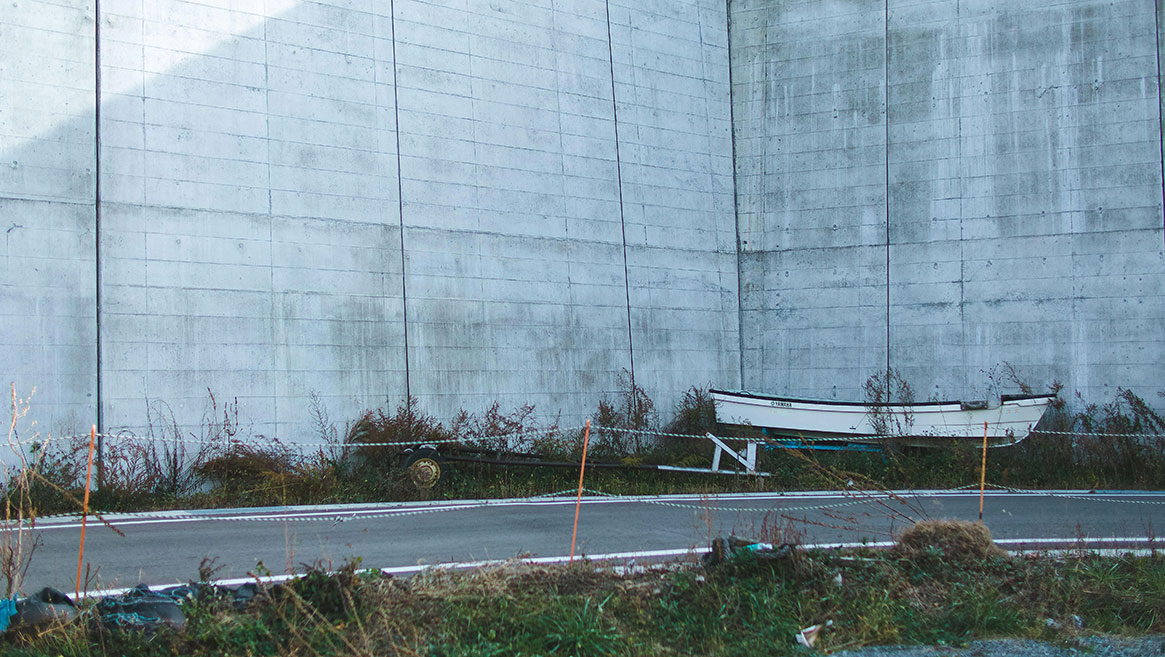
In many of Japan's coastal communities, miles of protective concrete infrastructure have replaced water views and access. Photo by Nicolas Datiche/AFLO/Alamy.
Concrete solutions
To oversee the mammoth task of rebuilding after the earthquake and tsunami, Japan launched the Reconstruction Agency, set to operate until 2031. It was tasked with coordinating a menu of 40 recovery projects, with substantial funding tied to each one, involving various national ministries.
But the federal government still aimed to protect local autonomy. Municipalities submitted their reconstruction plans to their respective prefecture (or todōfuken government, a level between municipal and national), which then sent funding requests to the Reconstruction Agency.
"Before 2011 it was all prepared at the national level, but it was decided this time to create building programs that reflect local government needs," says Kanako Iuchi, a local and professor at Japan's Tōhoku University International Research Institute of Disaster Science. "So it was up to locals to come up with plans, then after submitting them, have them approved and await the funding. Policy was designed to be bottom up."
While this system helped coordinate and systematize reconstruction funding, the volume of projects and associated funding often overwhelmed municipal planning staff, extending approval wait times. Meanwhile, concrete infrastructure was encouraged and prioritized. While seawalls and levees failed at full-scale protection in 2011, they crucially allowed more time for evacuations, Tokyo planners argued.
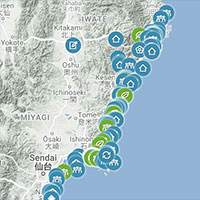
This collaborative tool aims to track all recovery efforts in the region, from community services to the biggest reconstruction efforts, to better promote collaboration, social resilience, and sustainability.
As quickly as the debris from the quakes and tsunami could be cleared, so began construction of coastal defenses at 621 sites along 460-plus miles of coastal land. Today, the levees are the most striking addition to the landscape — despite questions over their efficacy against tsunamis, as well as their promotion of erosion.
"On reflection, the levee money could have gone toward planning and [non-governmental organizations]," Iuchi says, "but immediately after such a traumatic disaster, people understandably wanted to feel safe first." Now, though, many residents regret their reality, she says. "It's odd. Not to be able to smell the sea, to see it."
"The plans for the giant levees — just supposed to be guidelines — ended up like mandates," explains Robert Olshansky, FAICP, a University of Illinois professor of urban and regional planning with a long-time interest and expertise in Tōhoku's reconstruction. "Even after given choices, local municipalities are used to following the formula from the national government."
Some prefectural matters require consent by Japan's Ministry of Land, Infrastructure, and Transport, including projects that cross prefectural boundaries or impact national interests, like highways. But as a result of decentralization enforced in the late 1990s, about 75 percent of those matters are now decided by municipalities.
After the tsunami, local coffers were filled to carry out certain projects at their own discretion, but that budget remained dwarfed by national funding for seawalls and infrastructure. About 80 percent was covered by the national government, leaving communities with a minimal bill. Plus, such infrastructure offers are often tied to free housing, hospitals, schools, roads, and so on, Olshansky says, proving hard to turn down.
"It is a huge recovery budget, with a remarkable 40 percent of budget going to building infrastructure," says Iuchi. And there was little dithering over allocations of Japan's generous funding contrasted with approvals elsewhere, which can take time, as many U.S.-based planners know. "Compare the $320 billion to the $120 billion for Katrina that mostly went to relief."
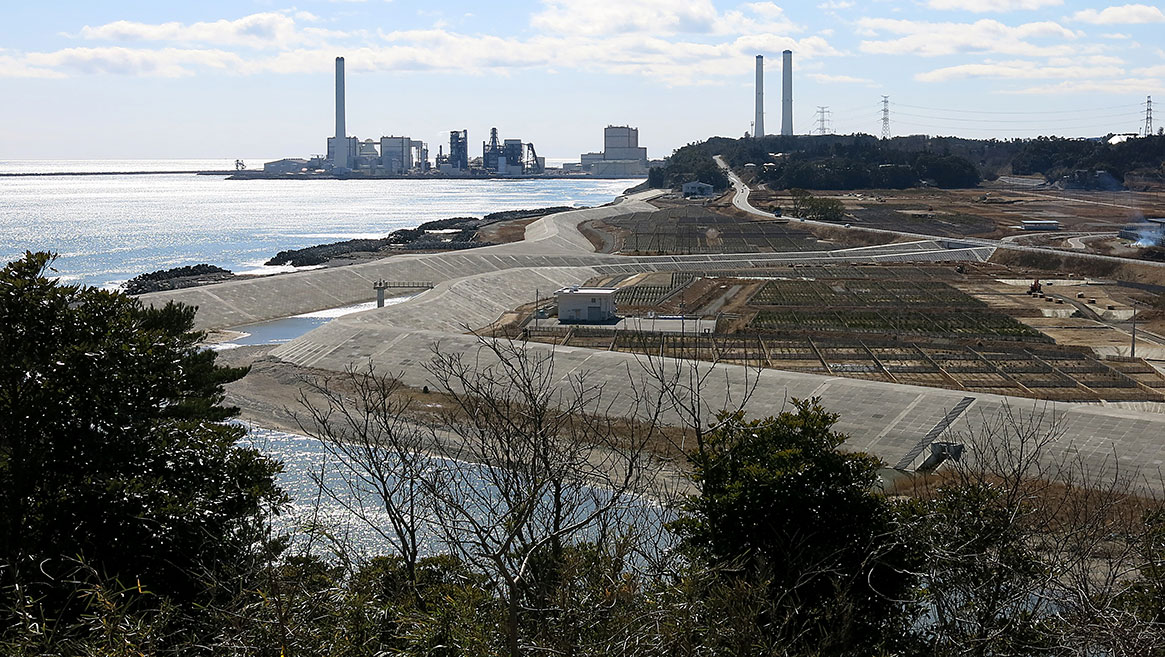
Near the Futaba concrete power station, seawalls and other cement infrastructure now dominate Japan's northern shore. Photo by Michael Fitzpatrick.
Best-laid plans
As reconstruction ramped up, suggestions rolled in for more sustainable patterns of development: leveling hilltops for new communities, incorporating smart technology, and experimenting with what architects touted as "German-style eco-garden villages" (public housing and communities that rely on sustainable building techniques, energy saving provisions, and sensitive landscaping). These all marked a departure from Japan's small towns and villages, which tend to follow a more car-centric, market-led approach, often resulting in crumbling concrete and exposed utility lines that obliterate traditional architecture and rural views.
"There was harmony historically, but car-centered communities destroyed all that," Christian Dimmer, urban designer and assistant professor at Waseda University in Tokyo, said in 2011. "There is little or no public transport and only deeply ingrained car-centered patterns. My hopes for the rebuilding are for compact, walkable, energy-saving places that are good for communities and the aged as well."
Good intentions abounded, Iuchi remembers, and the plans municipalities submitted were incredibly diverse. One common thread was to create more resilient communities through more effective land use management. In practice, that meant leveling hill tops or forming artificial hills for higher, safer elevations.
But rebuilding out of harm's way was never going to be enough — a belt-and-suspenders approach to future risk emerged. All municipalities in the affected areas were required to draft reconstruction plans following the Act on the Development of Tsunami-Resilient Communities, which aimed to build defenses strong enough to withstand even a once-in-a-century tsunami.
"And because such a lot went on concrete — about 40 percent just building — it's seen as an infrastructure-based and engineering-focused recovery," Iuchi says.
Machizukuri planning
Still, all recovery hopes aren't dominated by cement, brick, and mortar, Iuchi points out.
"There were new forms of recovery platforms. Traditional recovery is led by the national government. But this time, there was more room for NGO types, individuals, volunteers, and businesses," says Iuchi, who focuses on policy impacts on communities and community rebuilding strategies in the Tōhoku region.
That's included a type of community development, machizukuri, which constitutes a third wave in Japanese planning characterized by everyday, street-level activities spread through participatory processes. The practice combines building with a community-based process aimed at improving the environment.
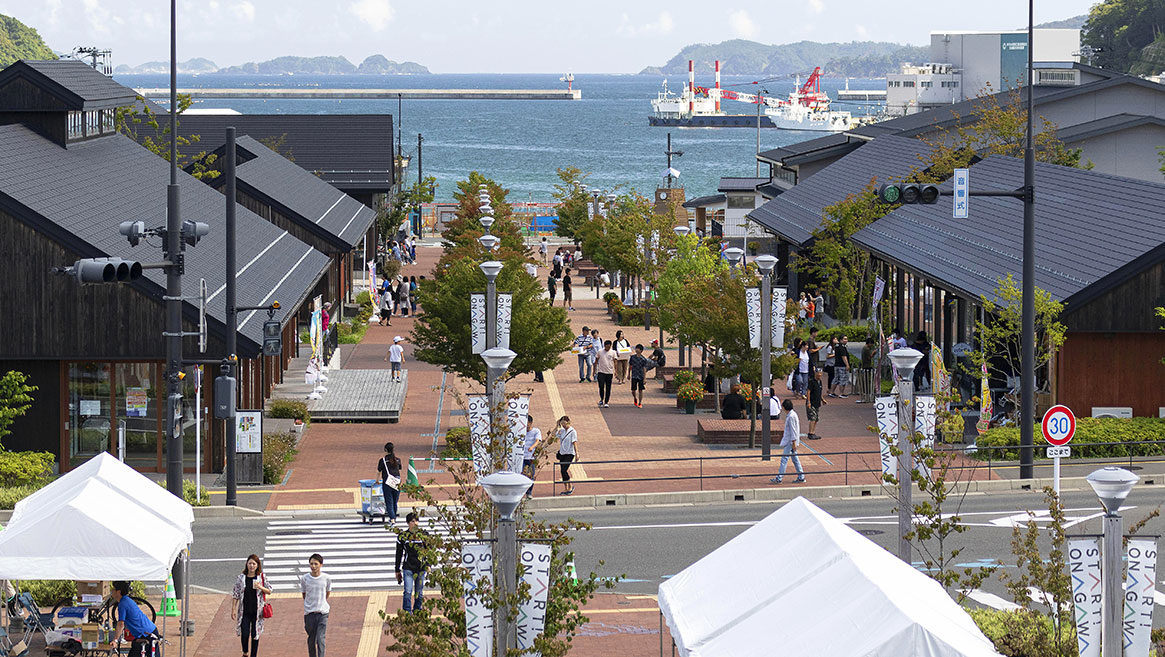
Described by some as the region's reconstruction "front-runner," Onagawa recovery was driven by three planning priorities set by the community and local businesses: integrating two town centers into one, establishing a convenient central corridor (above), and maintaining some connection with the water. Photo by Rodrigo Reyes Marin/ZUMA Wire/Alamy.
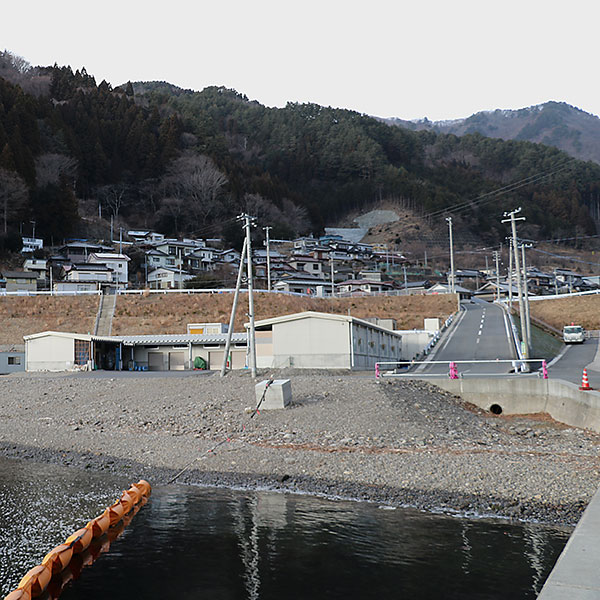
The town of Koube initially asked for a levee but chose to rebuild a workplace at sea level and move homes higher, above a repositioned road. Photo courtesy of Kanako Iuchi.

In Moune, residents rejected the government's initial relocation site and instead suggested an alternative that allowed them "to live humble." Photo courtesy of Kanako Iuchi.
Local governments have recently adopted machizukuri to create land use policies and programs for stronger, safer reconstruction. Instead of relying on central planning, municipalities have negotiated and coordinated with national and prefecture governments and collaborated with numerous key participants, like NGOs, universities, the private sector, and — most importantly — residents.
While outsiders may see only the heavy hand of civil engineering projects, over 860 districts have made good use of these community rebuilding programs — one of the reasons the Tōhoku reconstruction is taking so long, Iuchi says.
"There are limits to what the community can do because of established hierarchies," she says. "Land use could have been smarter, but because of silos in local and central governments, there were discrepancies."
Communities that followed the pattern of involving academics and NGOs have been the most successful, or at least satisfactory, in post-disaster Tōhoku, Iuchi says. Success stories include two small fishing villages in the north of the region, Moune and Kerobe. "Community size can complicate the process, with bigger ones running into logistics problems," Iuchi says. "These two villages, small and cohesive, made it easier to reach consensus. Coordination is very important, although it is undervalued everywhere."
Even before the tsunami, Moune had a history of environmental consciousness by promoting solar panels and ensuring the preservation of coastal biodiversity. Now, the village serves as a hub for conservation efforts spearheaded by university researchers and activists.
"Unique opportunities emerged over time; having everyone speak out, having techniques and tools and then coming out with consensus," she adds. "They learned it was important to speak to the government with a collective voice."
The fact that both villages are (and were) mere hamlets with about 50 houses apiece makes an enormous difference in outcomes. Fleet-footed resident associations were able to galvanize villagers. Eschewing bureacracy, they also refused seawalls, preferring new homes built out of the path of tsunamis, plus well planned escape routes.
"The conventional thinking is that we have to choose either disaster preparedness or the environment," Katsuhide Yokoyama, a professor of environmental hydraulics at Tokyo Metropolitan University and a consultant to the two villages, told Japan's Asahi Shimbun newspaper in March 2011. "But we may be able to achieve both, as the two communities are intending to do."




